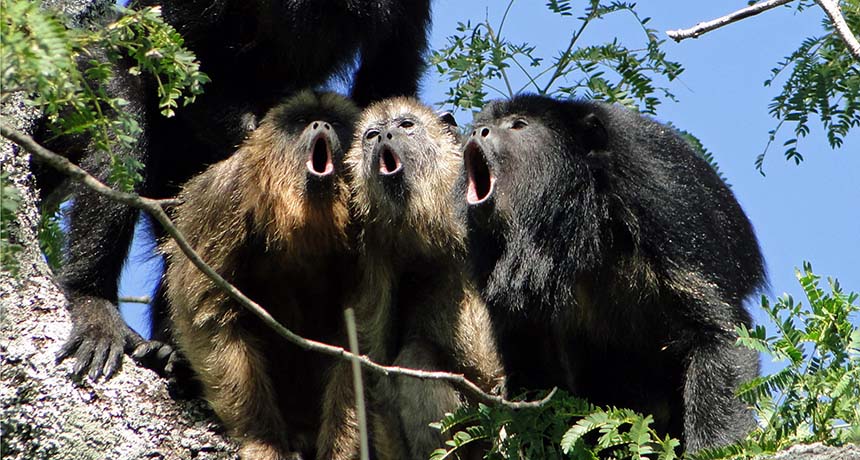Howler monkeys sacrifice sperm for deeper roars

Researchers compared testes size with hyoid bone size in 10 species of howler monkey, including Alouatta caraya (shown).
Mariana Raño

Researchers compared testes size with hyoid bone size in 10 species of howler monkey, including Alouatta caraya (shown).
Mariana Raño